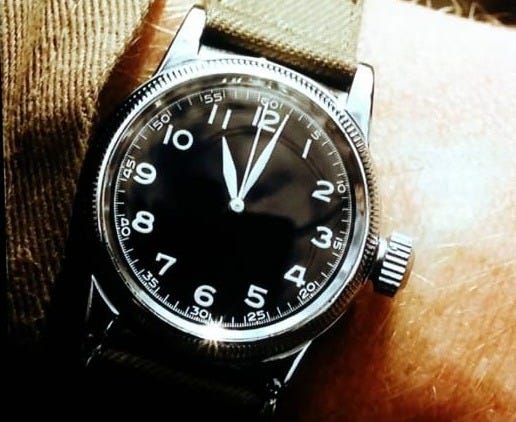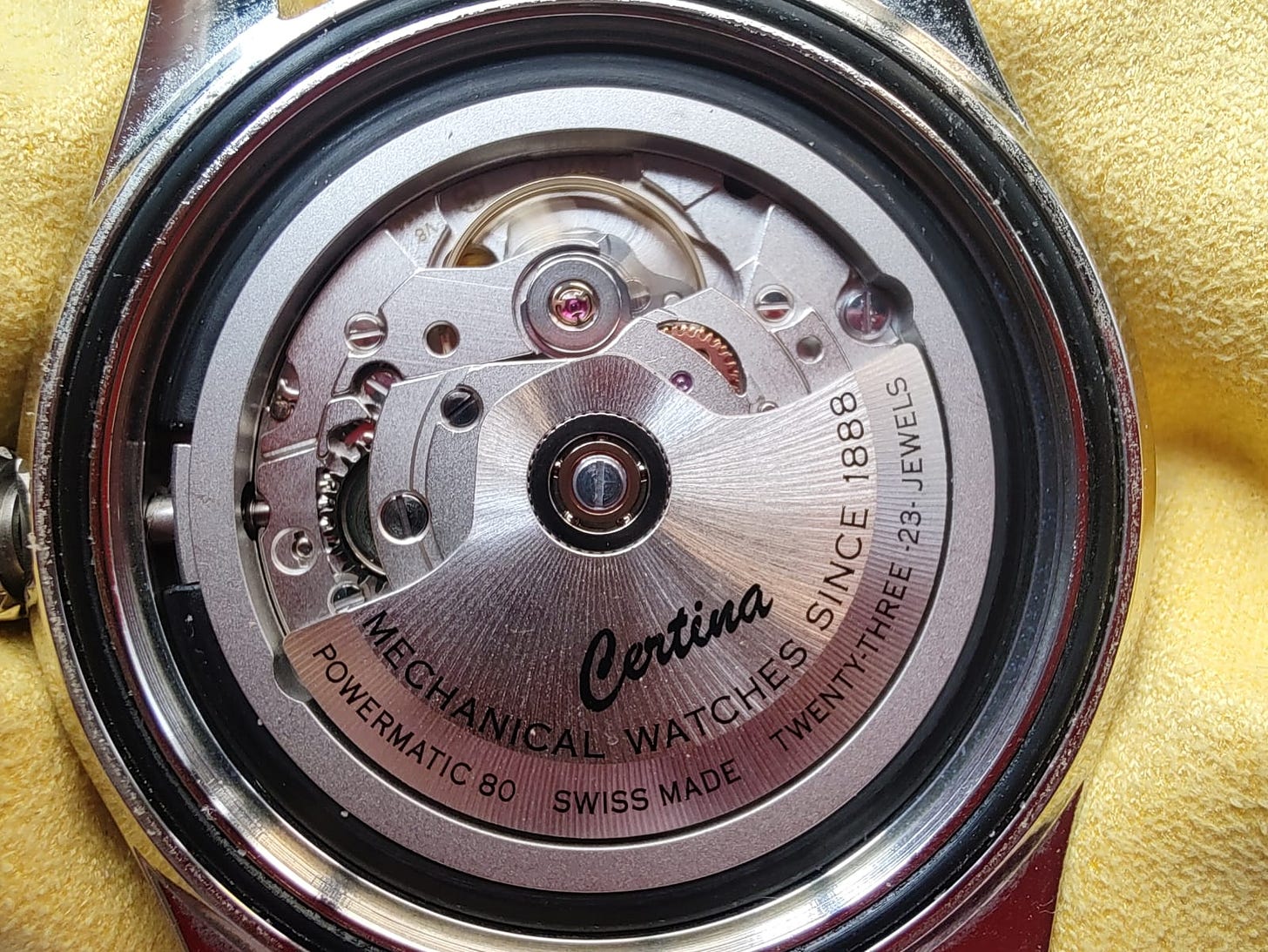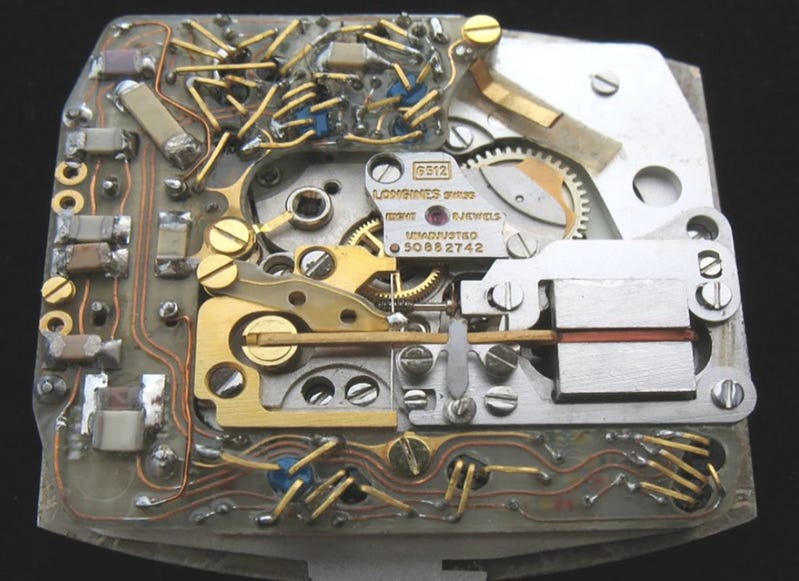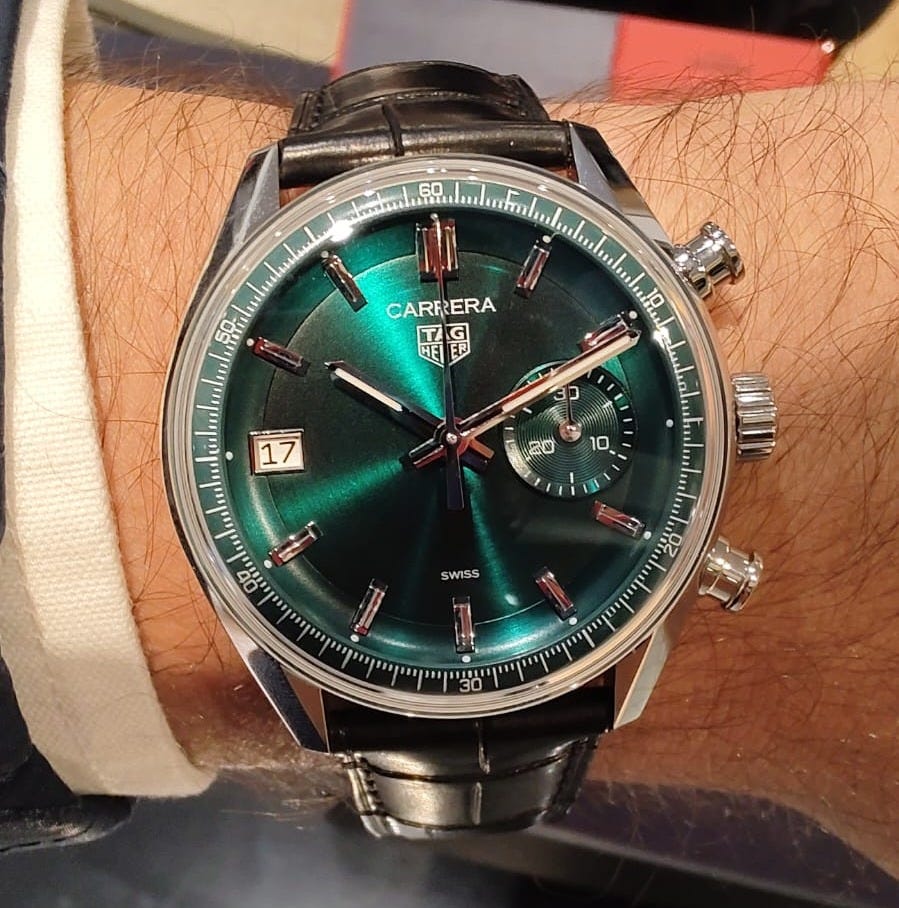Since the beginning of my recent watch journey, I’ve been trying to identify which type of collector I am, the box ticker, the historian, the obsessive, the value-hunter, the hoarder, the Zen, the engineer, the list could and surely is infinite.
But one day after watching Band of Brothers, the epiphany struck, maybe I’m looking at it the wrong way, instead of a single label, maybe I contain many nerds.
In life we become our true selves through a combination of experience, tastes, culture, hardships, successes, education and environment. This certainly applies to watch collecting.
Thus, containing multitudes (or collectors) in oneself is not out of the ordinary, some more focused than others, hence the profiles I’ve described in the opening paragraph, but some of us are more dispersed.
After a bit of soul searching, I understood that my collector type focuses on the following fronts:
History
Engineering
Pragmatism
And yes, it sounds generic, but the more I thought about it, the more it made sense.
History
This aspect is rather obvious if you’ve been following the page, I re-entered the hobby thanks to the Apollo 11 50th anniversary, and from then on, I couldn’t stop thinking about watches.
Then you go into WW1, with its converted pocket watches, then Cartier appears with the Santos, after it you want to know the watches of both sides of WW2, then Custeau, the ones worn by Sir Edmund Hilary and Sir Tenzing Norgay, look at the watches worn by F1 legends, the rabbit hole of history is deep, and it just doesn’t stop.
It is so deep that many of the watches I own and want to own in my collection are either inspired by, or are, historical pieces.
An example of this is the fact that two of my grails are the Bulova A-15 and the Omega Speedmaster. My favorite watch in the collection is a Certina DSPH200M, a diver that evokes two of my three favorite dive watches, the MoD Omega Seamaster 300 and the Blancpain Bathyscaphe, while it also being the platform for some of the most legendary Certina divers ever.
Here is when that Band of Brothers reference comes to light, as while walking I was meditating on getting the watch Lt. Winters was wearing on a cream dial configuration, and right then and there I understood what type of collector was part of me, because I wanted a handsome yet tough historical field watch for my everyday piece, and very few brands had it.
Add to this the fact that many of the posts in this page cover the history, albeit briefly of these pieces, and that I want to have a “Moonwatch” collection comprised of the Moonswatch, the Lunar Pilot and the Speedy. It becomes rather evident that the history of watches and their use are a key part of my style of enthusiasm.
Engineering
I’m going to cheat a little here and include design as an aspect of engineering of the watch, but regardless, a well-engineered watch is something truly magical.
The previous statement is independent of how old the watch is, as many vintage pieces hold amazing feats of engineering that are rarely seen today, in mechanical techniques, materials, integration of design, complications, you name it.
An example of this can be seen on the initial Speedtimers by Seiko, an elegant integrated automatic chronograph from the late 60s, not only for the integration of the automatic chronograph in a slim movement but for also how Seiko standardized their pinions and second hands to be able to reset their second hands while mounting, proving an exceptional eye for engineering in vintage watches.
For more information on the Seiko seconds hand, I recommend this article by Ashton Tracy, it is truly exceptional and interesting.
Mind you my love for engineering doesn’t stop there, as in my collection I also own a Bulova Lunar Pilot with a precisionist movement, a quartz movement that oscillates at 262 kHz, giving it the most smooth sweep I’ve seen on a watch, while also keeping perfect time, thanks to +/- 5 seconds per month, a testament to how far quartz has come since the days of the Astron and the Beta 21.
I blame my engineering background on this, as a watch that uses silicon balance springs and escapements, uses the hands as its movement, uses a rotating oil-filled case to tell the time, a 35 million year eternal calendar or has a soft case that molds to the user, will always be fascinating to me even if I will never own them, and are a testament to watchmaking as an expression of engineering, even if it comes from a brand I usually don’t like.
Pragmatism
If history is the heart, and engineering is the brain, pragmatism is the skeleton in which most of this stands.
A hint of it could be seen on my first ever article here, with me trying to group watches into a Venn diagram, narrowing down my ideal collection to around 7-9 pieces, being the extra ones a quartz GADA and a very special, yet affordable, grail.
From then on, thinking of having more than 10 watches seems rather excessive. of course, excluding emotionaly significant pieces and heirlooms from this list, as they occupy a different niche.
Just wearing two watches per week at most, is a testament to that, the main one picked on Sunday for the rest of the week, should cover most bases, while the other, the beater, is only taken out of the watch box because I’m hitting the gym, the only exceptions being when a formal meeting or dinner is called upon, thus the watch is changed for that specific day.
Then there is the matter of redundancy, as I don’t see the purpose of owning more than two of each type of watch for extended periods of time, and usually the counterpart of the mechanical piece is either quartz or has an extremely different design to the main mechanical one, an example of the latter is that I want to own a TAG Heuer Glass Box Carrera Dato, which is certainly different from a tri-compax chrono (In this case a Speedmaster), likewise there are exceptions to this aspect of my pragmatism, but these respond to mostly sentimental reasons.
--
So where does that leave us? Am I a pragmatic engineering historian? Most likely, but I also feel strong sentiments to certain pieces of my collection, which prevent me from selling them, does that make me a design-driven sentimental hoarder? I don’t think so, as those pieces are family heirlooms with their own history, engineering and pragmatic usefulness inside the collection.
Will this remain, I don’t know, we as collectors grow and change throughout time, yes, some pieces and core principles stay the same through the journey, but if we do not evolve, we risk our collections and ourselves becoming stagnant, while reminiscing of the when things were “better”, blinded by nostalgia.
So, until next time, this pragmatic engineering historian sounds off, please tell me if you’ve had epiphanies like this, or if you’ve found it which type of collector are you and why.
As always…











Love this writeup! Read it late last night and had to come back to it this morning to let it sink in. Really enjoyed the different perspectives on collecting. I find that lately I pine for the watch that got me into the hobby which is chronographs. I've been seriously considering having a sub-collection dedicated to chronos 😂 cheers my friend!
I wish I could collect time.